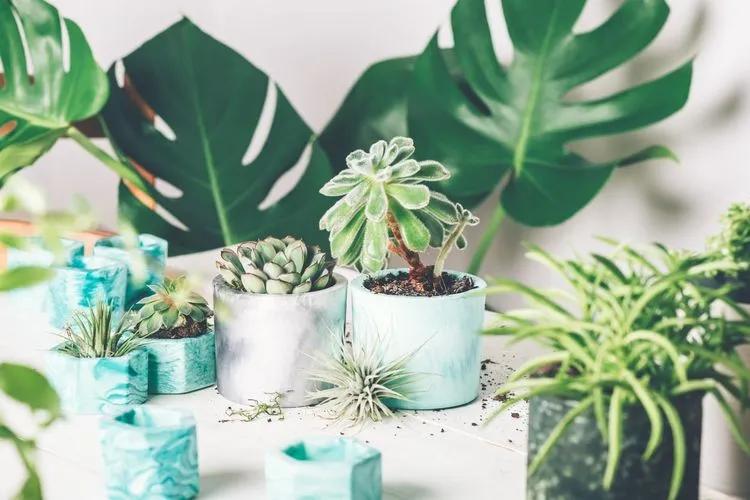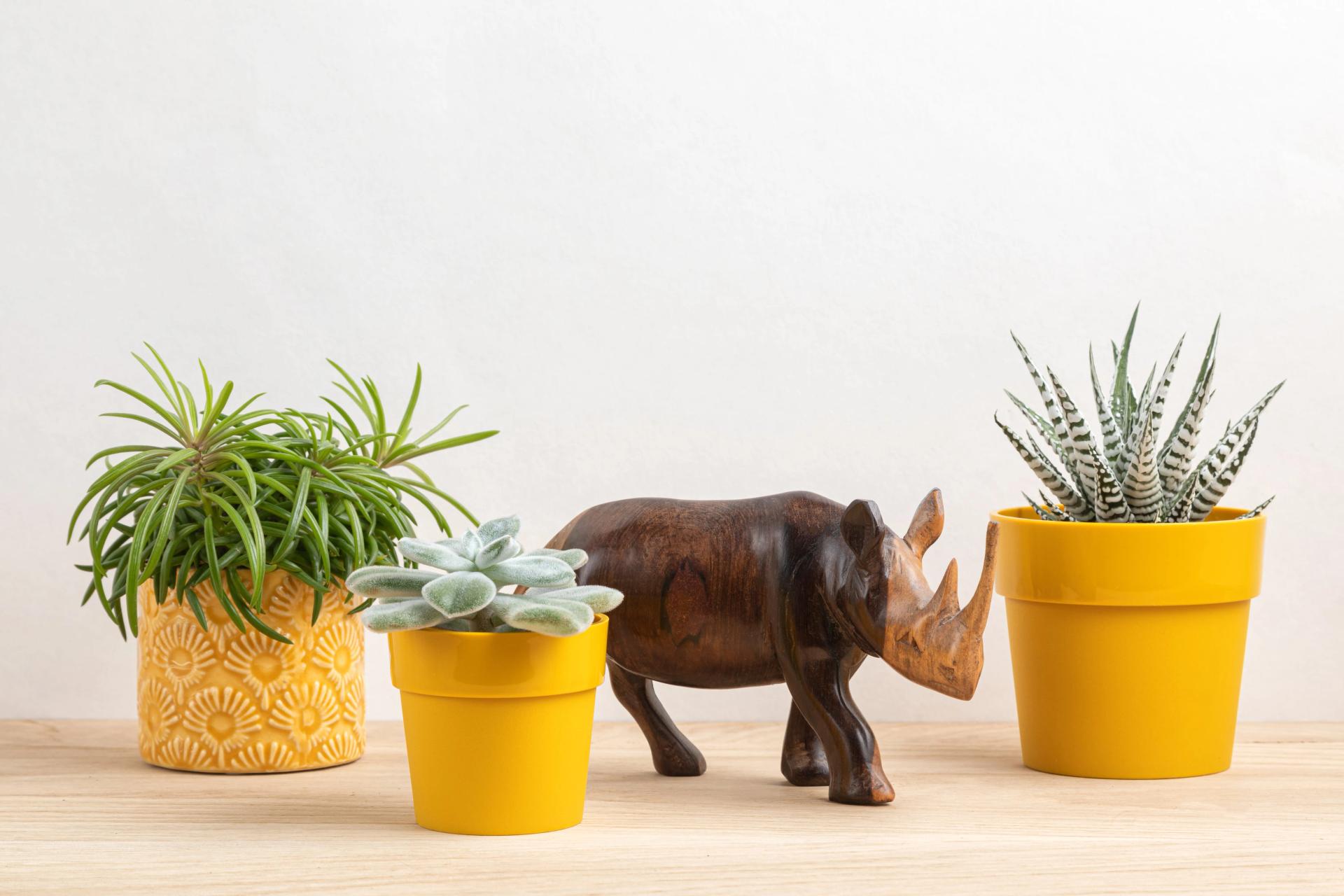Do you want to try on a new role — become a father or mother? Don’t get worried; we are talking just about pretty greenery. Where to start? We have created a short guide to help you take the first steps in caring for houseplants.

Why Caring for a Plant?
Plants are suitable for anyone of any age, mindset, and lifestyle. They perform various roles in the home, so you first need to understand why you need them. For some people, planting helps to “ground” — to feel connected with nature and observe a piece of nature on their window sill. Others choose plants to fill the space with positive energy. Many people follow the purpose of purifying the air in their apartments.
Understanding your motivation will help you choose a suitable plant. You may need an Aloe to make yourself face masks or choose Bamboo to provide some positive vibes. We are pretty sure there is always a reason to have a new plant (or two), so what to do next?
Evaluate Your Space
Before having a plant, it is essential to inspect the space where it will be placed. Look at the area through the eyes of a plant. What is the lighting in your house? What will be the humidity in the room? Are you planning to put a plant on the windowsill, or do you want to decorate a bathroom with no direct sunlight?
Importantly! Suppose you live with animals or children. In that case, it is better to choose plants that do not have toxic substances in their sap or on the leaves' surface, so there is no danger of poisoning.
Choose Plants and Get Acquainted
Now that you know everything about your space, you can choose the perfect plant. Pay attention to your conditions first, for example, do not choose sun-loving plants if you have north-facing windows. You can start with easy-care plants, such as the ZZ Plant or Calla, or begin collecting a collection of succulents. When you choose a plant, read how to take care of it, and provide a little research for some care advice.

Pots
Small containers, such as plastic containers, paper cups, or clay pots, are suitable for growing seedlings. When the plants grow a bit, they can be repotted to their permanent pot. Always replant the greenery from the pots they are sold in.
Some plants like not too-big containers, while others prefer more space for their roots. Knowing that you can't plant plants in pots without a drainage hole is crucial: it causes root rot as excess water is stored in the soil.
There is a wide variety of different pots made of multiple materials. We recommend plastic pots for pet owners and families with children as they will not break in case of an emergency.
Soil
Soil for growing plants should combine different components: sand, peat, coconut chips, sand, clay, and others. Different plants require a specific ratio of these components. Read what kind of soil your green friend needs. You can look for a ready-made mixture, depending on the type of plant, or combine substances in the needed proportions by yourself.

Temperature and light
For most plants, a room temperature of 68-71 °F (20-22 °C) is suitable. Some do not like drafts or need additional lighting from unique lamps. You can buy them for the cold season. All plants have their life cycles, so do not worry if the pot does not grow or bloom. It may have a rest season during fall and winter. It is vital to adapt watering and fertilizers to the season — in summer and spring, the plants are more active, and in winter and autumn, most of them need less water and no fertilizers at all.
Water
The quality of water affects the well-being of your green friends. Spring or rainwater are considered the best options — they contain all the needed nutrients and have less dangerous chemicals. Most plants respond to distilled water well; consider it as an alternative.
As for tap water, it can also be used. However, always let it sit for at least a day before using it. It might contain chlorine and other dangerous substances that are neutralized by waiting.

Stages of Becoming a Plant Parent
Stage 1. It's Just a Little Ficus!
At first, you dare to buy one plant just to green the space, make a friend, or have someone to worry about. Everyone has their own reasons. You saw cute pictures of ficus in your friend's camera roll and decided to buy yourself a little one as well. It's fun to come up with a name for it!
Stage 2. The Anxiety of a Young Parent
It took half a day to find the perfect place. How to plant correctly? Is there enough light? Will tap water hurt the baby? Is this pot big enough? At first, everyone is worried because the plant is a living creature. After a few days with a green friend at home, you start to feel how it enlivens the space and adds some warmth. Hmm, it’s time to get him siblings!
Stage 3. Beautiful and… Functional!
Over time, the home garden grows, and you make a salad and think: why haven't I grown all for it by myself yet? So next spring, you plant Mint, Basil, and Tomatoes on the balcony! Sure, you can make skin masks from Aloe! And what is the name of that plant that you can dry off and make tea of it? I may need to subscribe to this gardening blog!
Leave the Fear Behind
Even if a plant dies (which most likely won't happen if you follow our guide), it's not the end of the world — it's an experience. We advise you to treat this process with simplicity, do not be upset if something does not germinate or dries out. You can always sow a new one or order another plant in your favorite store. Plant what you want, even if it may seem that it will not work. Many people decide not to get plans as they are worried they won't be able to care for them properly. However, the main thing is to grow them with love, then each new leaf or flower will make you happy.
